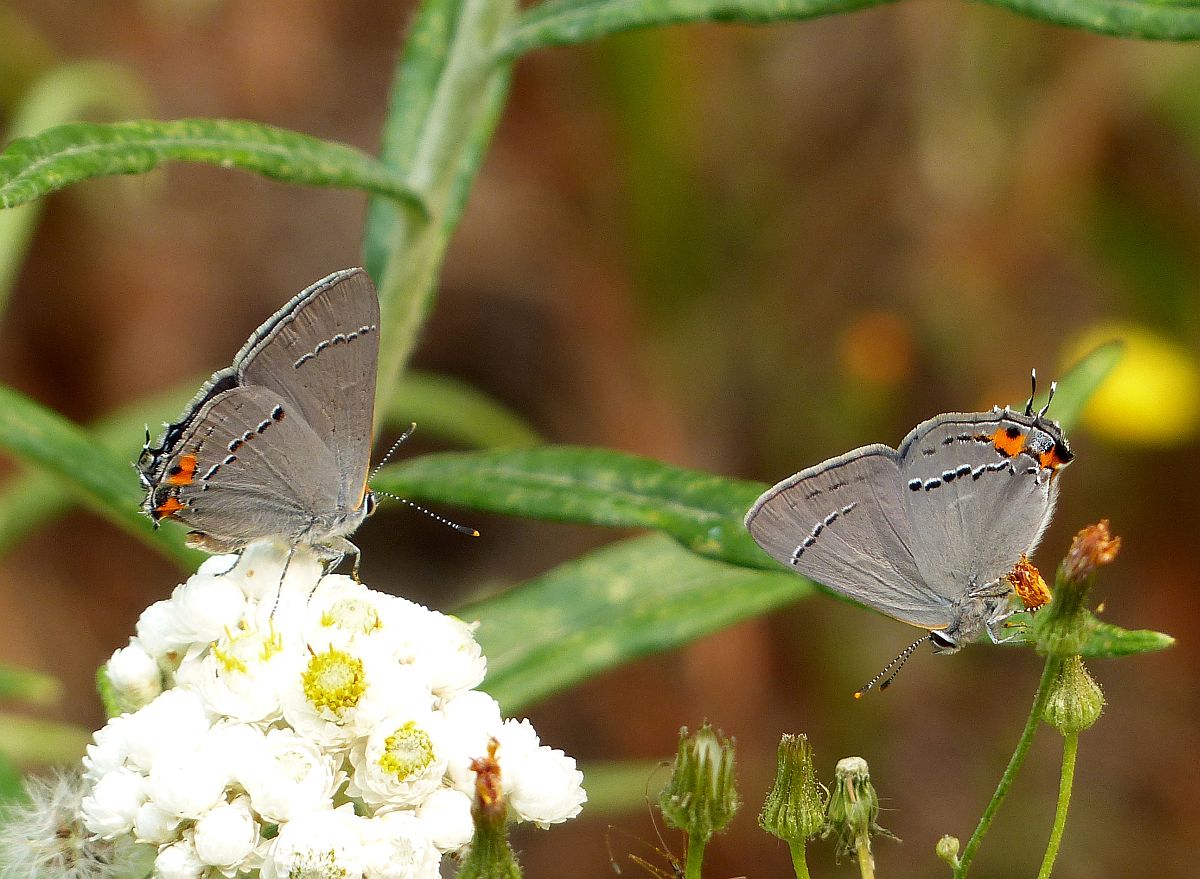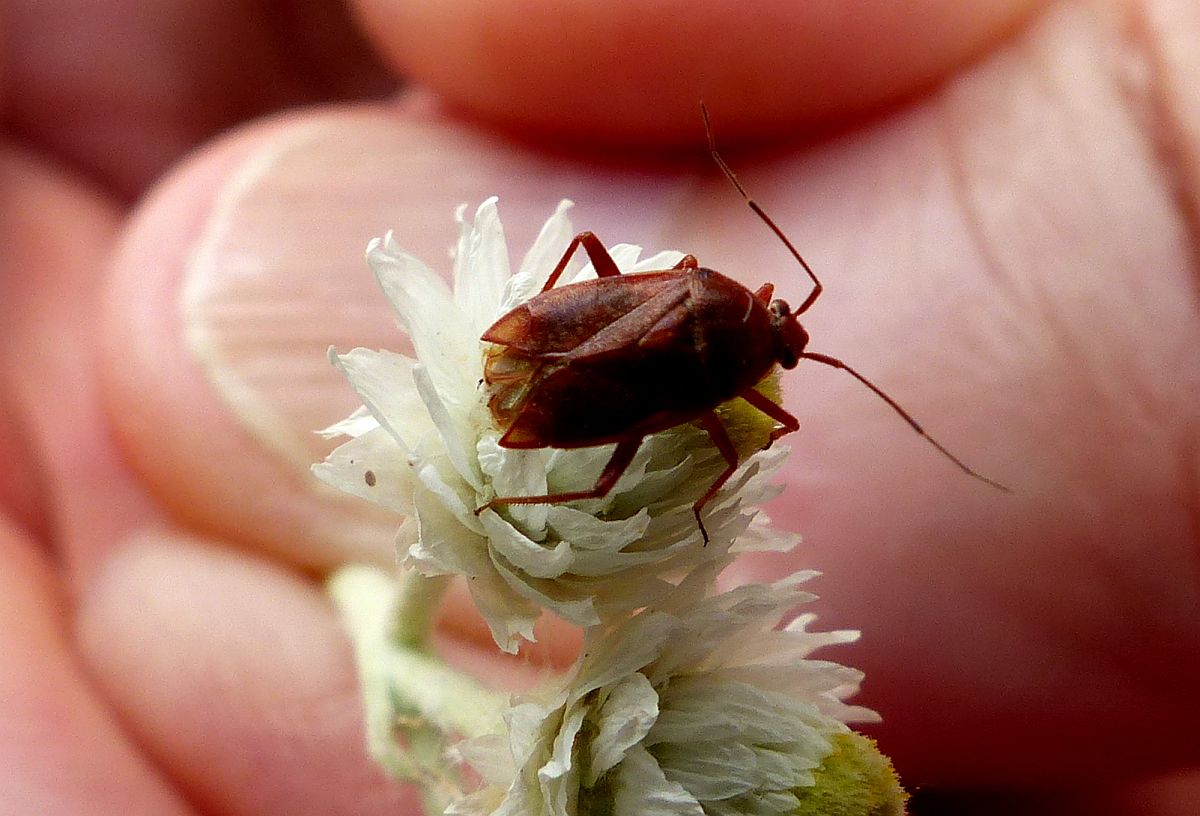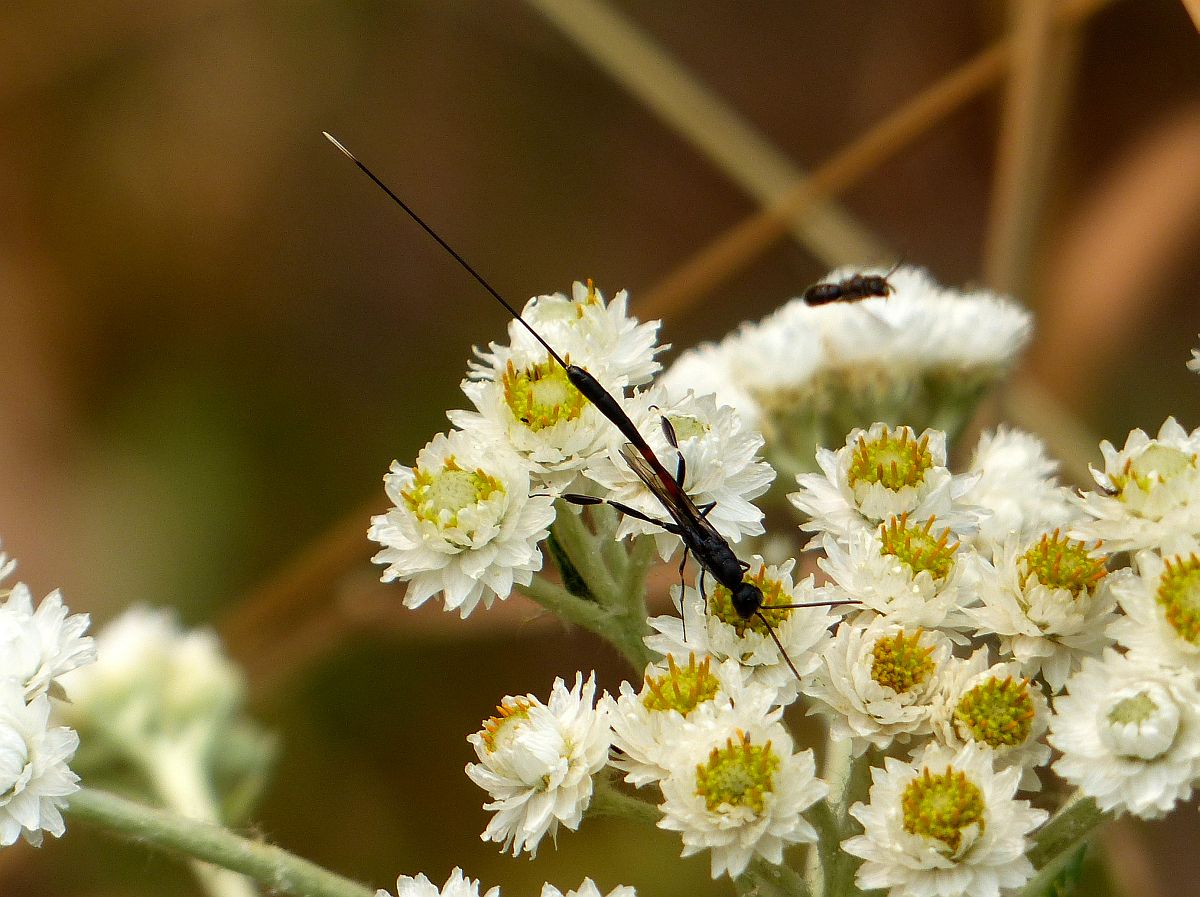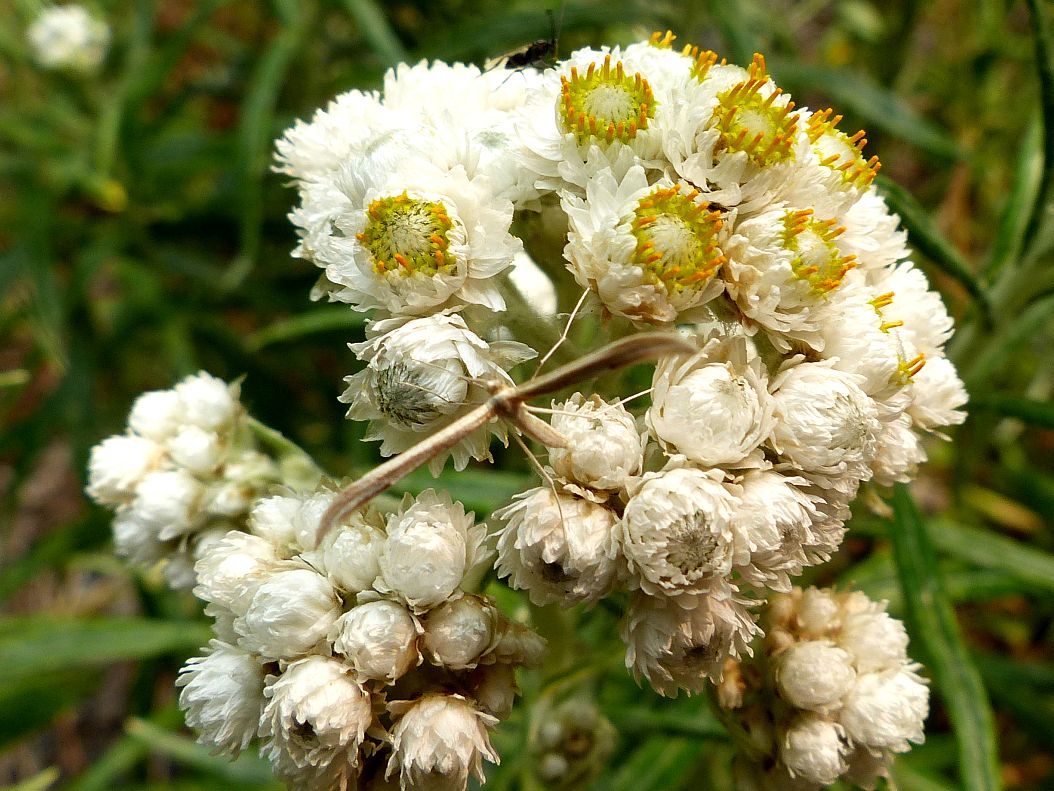July 6
2015 July 6
Aziza Cooper writes: Yesterday’s VNHS monthly butterfly walk went to Boas Road near Spectacle Lake. In spite of the smoke obscuring the sky and blocking the sun, the temperature was very warm and the butterflies were active. Six butterfliers found six species:
Grey Hairstreaks – nine on Pearly Everlasting flowers by the side of the road; one more in the clearcut. [Pearly Everlasting flowers are also a larval foodplant – Jeremy]
Western Tiger Swallowtail – 1
European (Essex) Skipper – 1
Cabbage White – 3
Pine White – 1
Lorquin’s Admiral – 2
We searched for the Boisduval’s Blue, but didn’t see it today. Several very interesting insects were found by Jeremy and photographed by Aziza.
Several of us went on to Spectacle Lake where there were many dragonflies near the swimming beach – Eight-spotted Skimmers and others.
At our meeting place at the top of Mount Tolmie, we saw one Anise Swallowtail. A bonus sighting there was three Black Swifts. [Birds – not hepialid moths! Jeremy]
What Aziza doesn’t say is that I don’t think any of us had ever seen so many Grey Hairstreaks all in one day and in pristine condition, and that we found it a huge thrill – Thank you so much Aziza, from all of us!.

 Grey Hairstreaks Strymon melinus (Lep.: Lycaenidae) Aziza Cooper
Grey Hairstreaks Strymon melinus (Lep.: Lycaenidae) Aziza Cooper
The next insect is one that we found and photographed just to remind ourselves that we shouldn’t be calling any insect a “bug”. Beetles, butterflies, wasps, dragonflies are not “bugs”. The insect in the photograph is a bug – identified by Scott Gilmore as a mirid bug of the genus Lygus.


Lygus sp. (Hem.: Miridae) Aziza Cooper
The next insect is not a bug. It is in the Order that includes wasps, and my guess (Jeremy Tatum) is that it is an ichneumonid of the genus Rhyssa or a near relative. It uses its long ovipositor to bore deeply into wood to lay its eggs on wood-boring larvae of other insects.


Probably Rhyssa or near relative (Hym.: Icheumonidae) Aziza Cooper
Nor is this a bug – it is a moth of the Family Pterophoridae. The best-known moth of this family in our area is Emmelina monodactyla, which looks quite like this one, but my recollection of this moth is that is was rather smaller than Emmelina monodactyla, and probably a different species. Although it is very visible in the close-up photograph, from any distance its colour seemed to match that of the Pearly Everlasting flowers so well that it was not easy to spot.

 Unknown moth (Lep.: Pterophoridae) Aziza Cooper.
Unknown moth (Lep.: Pterophoridae) Aziza Cooper.
On the same day, July 5, Barb McGrenere reports: At Mount Tolmie this afternoon, Mike and I saw:
Western Tiger Swallowtail 5
Anise Swallowtail 1
Pale Swallowtail 2
Cabbage White 2
Lorquin’s Admiral 6
European (Essex) Skipper 1
Then, at Finnerty Gardens (UVic) we saw:
Western Tiger Swallowtail 4
Lorquin’s Admiral 2
Pine White 1
Cabbage White 5
